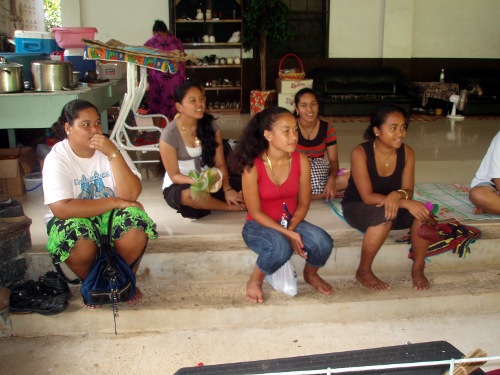
Maycleen, Arleen, Cantina, Chersea, and Vinnesalyn relax on the porch
In ethnobotany the students study plants the heal us, plants that feed us, plants that house and clothe us, and in the last portion of the course, plants that are sacred to us. Among the cultures of Micronesia, Pohnpeians are unique in centering their ceremonial life around a plant, Piper methysticum. Piper methysticum, or sakau, contains six different pschoactive compounds, termed kavalactones. At the start and heart of every traditional Pohnpeian ceremony is the sakau ceremony.

Maycleen, Arleen, Cantina, Chersea, and Vinnesalyn relax on the porch
Further information on the ceremony is available in Pohnpeian. There is also a non-traditional commercial side to sakau, and sakau is now a cash crop sold in evening markets.
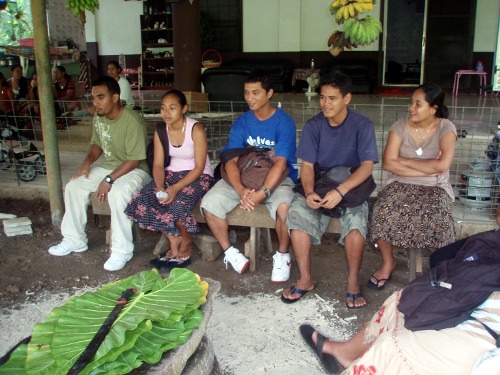
Edmond, Stephanie, Paulino, Mauricio, Cynthia
The uniquely designed local hut with a "U" shaped platform that hosts the ceremony is called a nahs. One enters the nahs at what is considered the back of a nahs. "Hanging" one's legs of over the edge of the nahs during a formal sakau ceremony is culturally inappropriate. The front platform is reserved for men and women with high titles. Those who serve the high titles (oarir) also sit on the front platform beside the high titles. In a formal ceremony, titled men sit down in the central bay by the sakau stone, the peitehl (poaitehl). Women with high titles sit along the "sides" of the nahs. When not in use, no object can be placed on the peitehl (poaitehl), nor can people sit on the peitehl, nor can the peitehl be used as a table.
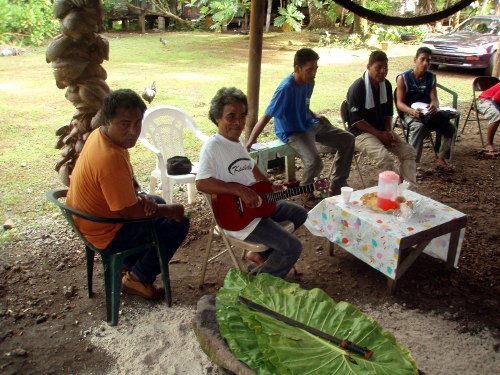
songleader
Prior to sakau entering the building, there is a relaxed informal atmosphere among the gathered guests. With the entrance of the sakau talking falls to a murmur. With the entrance of the sakau tradition invokes.
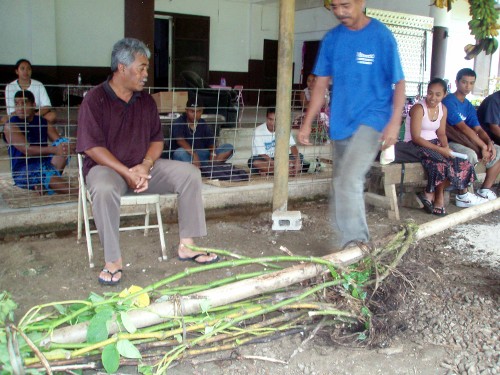
Sakau enters
When sakau is brought into the nahs the whole plant is brought in, complete with one, three, five, or any odd number of branches. The roots alone cannot enter the nahs in a formal ceremony. In an earlier term a student reported that an even number of branches - typically two to four - must be used, there may be municipal differences. There is a right way to cut off the branches.
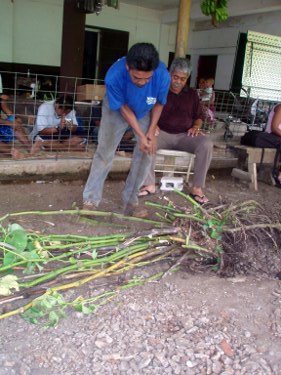
Cutting branches
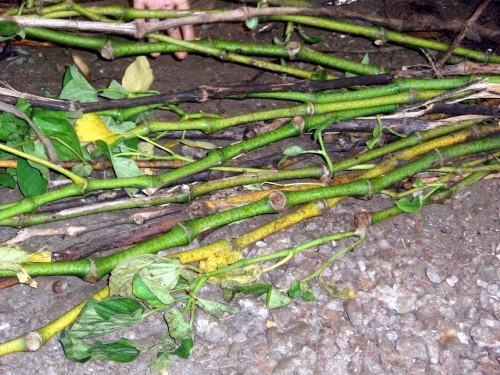
Short internodes with black speckles: rahmwanger
Although the sakau is traditionally cleaned using the outer husk of a coconut to scrub the sakau, the host this term prefers to wash the sakau in water. The following image is from a previous term.
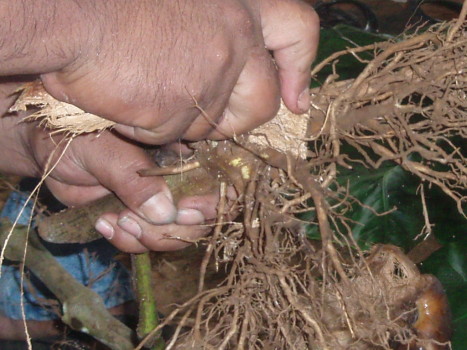
Cleaning the sakau
Tehn wehd (toahn wed) refers to the four taro leaves (Latin: Alocasia macrorrhiza) are placed around the stone to catch pieces of sakau that fall. These are called pwoaikoar. Pounders should place their feet under the pwoaikoar.
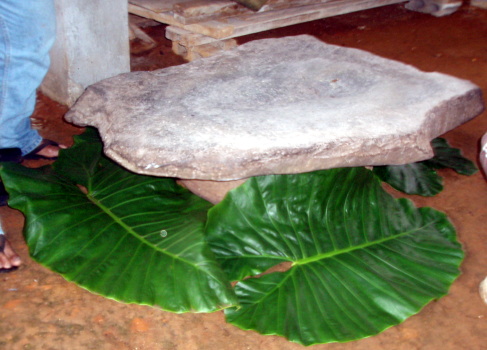
Pwoaikoar are placed under the peitehl
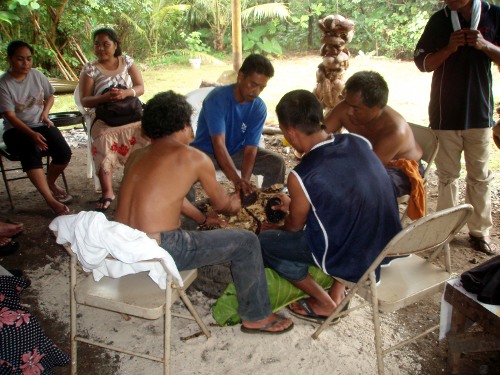
Sukusuk, note feet under the pwoaikoar
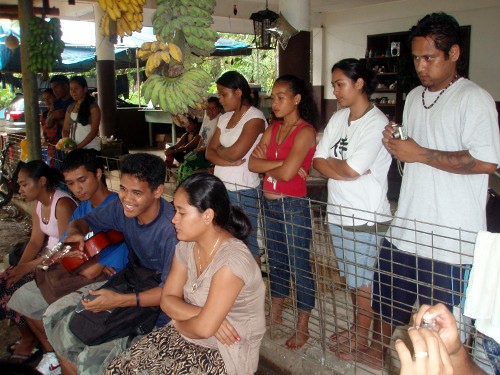
The student observing the process
Part way through the process of pounding the menindei (moanindei) calls for the "turning-over" of the partially pounded sakau by calling out "keidihd.
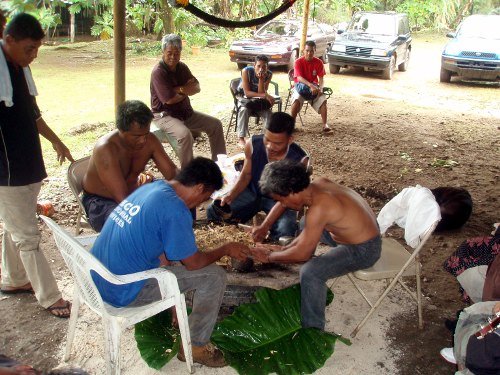
Keidihd
Kehlen prepares the kohlo, Hibiscus tiliaceus inner bark (phloem) used to squeeze the sakau.

Kohlo
With the sakau pounded, the squeezing can begin.
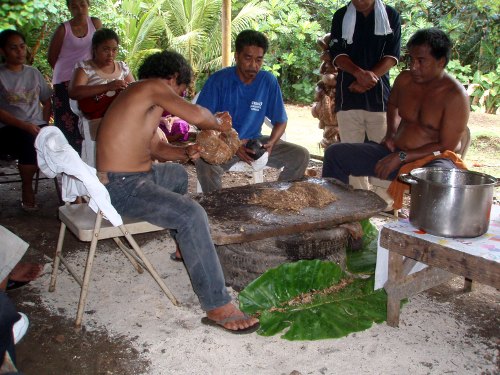
Wengweng
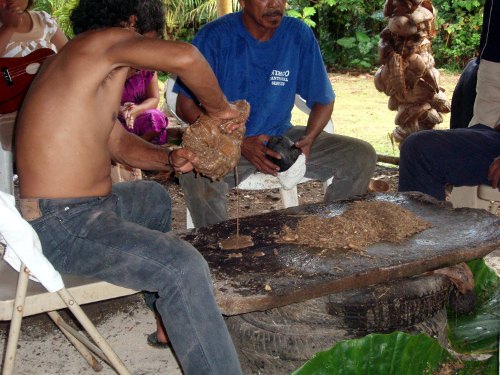
Wengweng
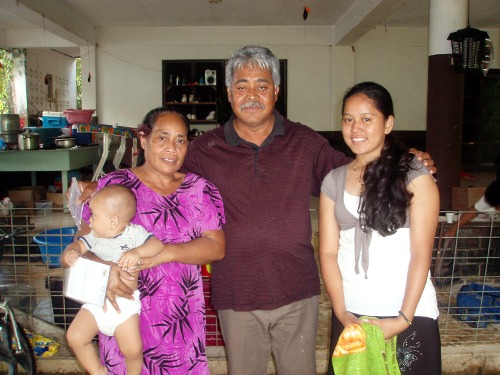
Senator Dohsis Halbert with his wife and Arleen Nedelec